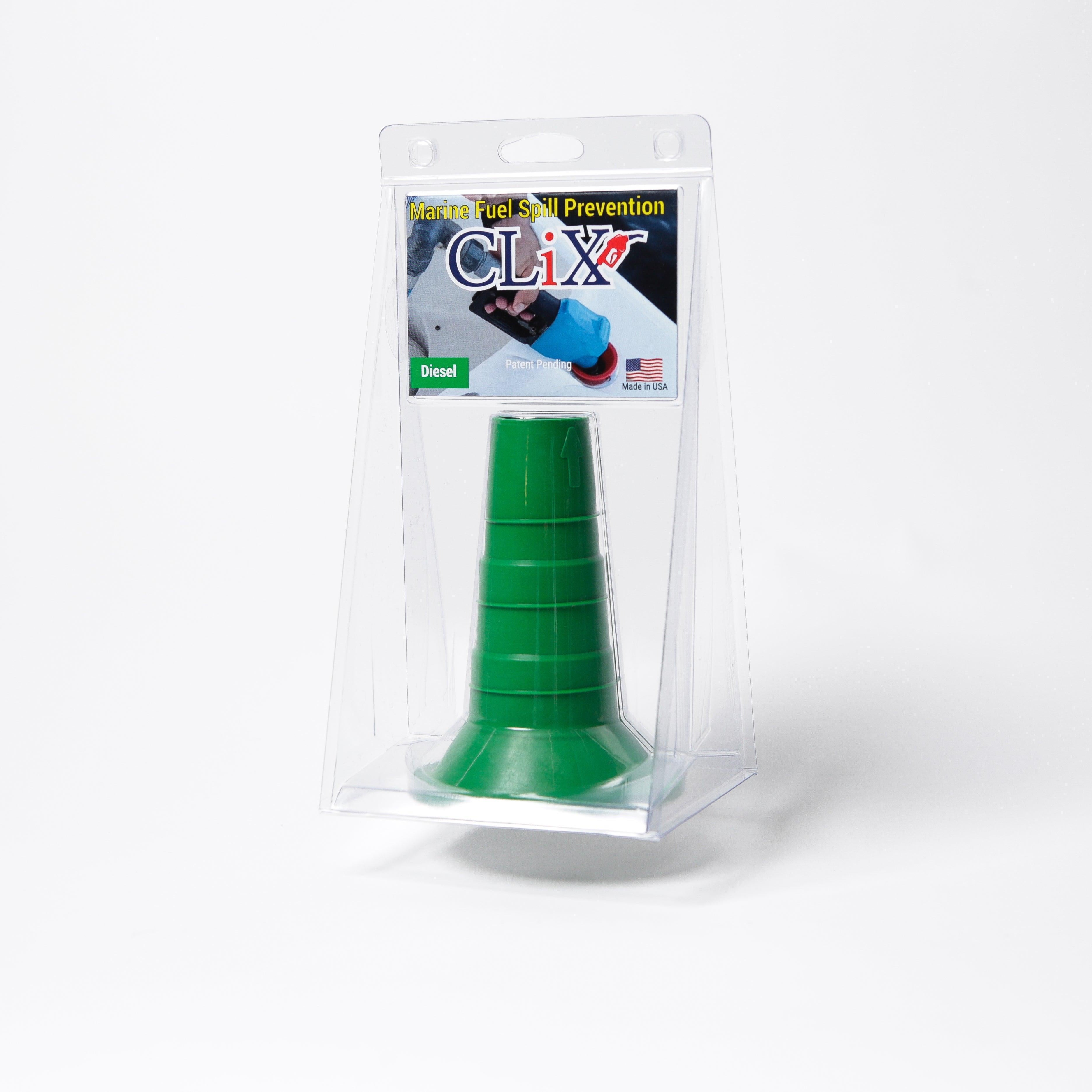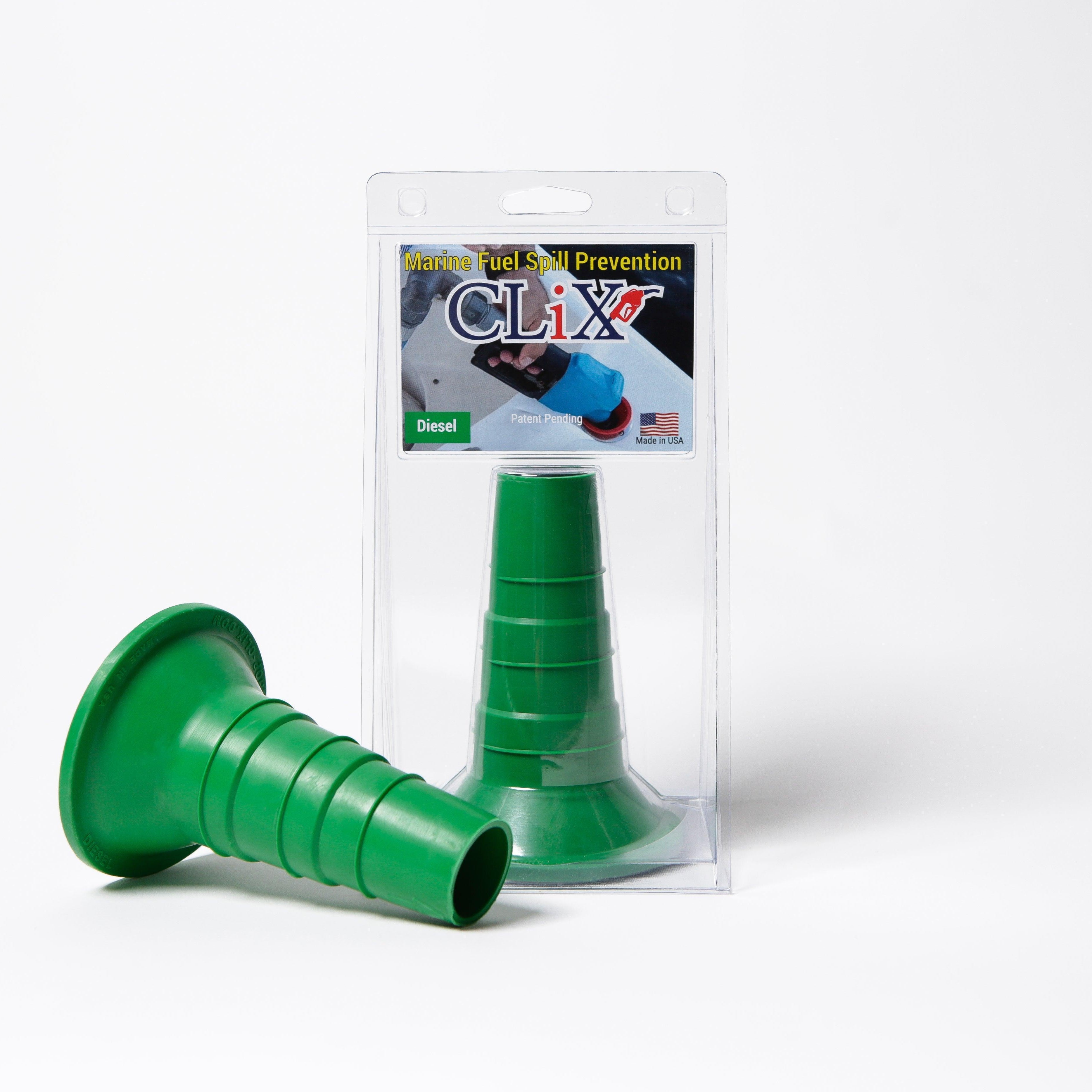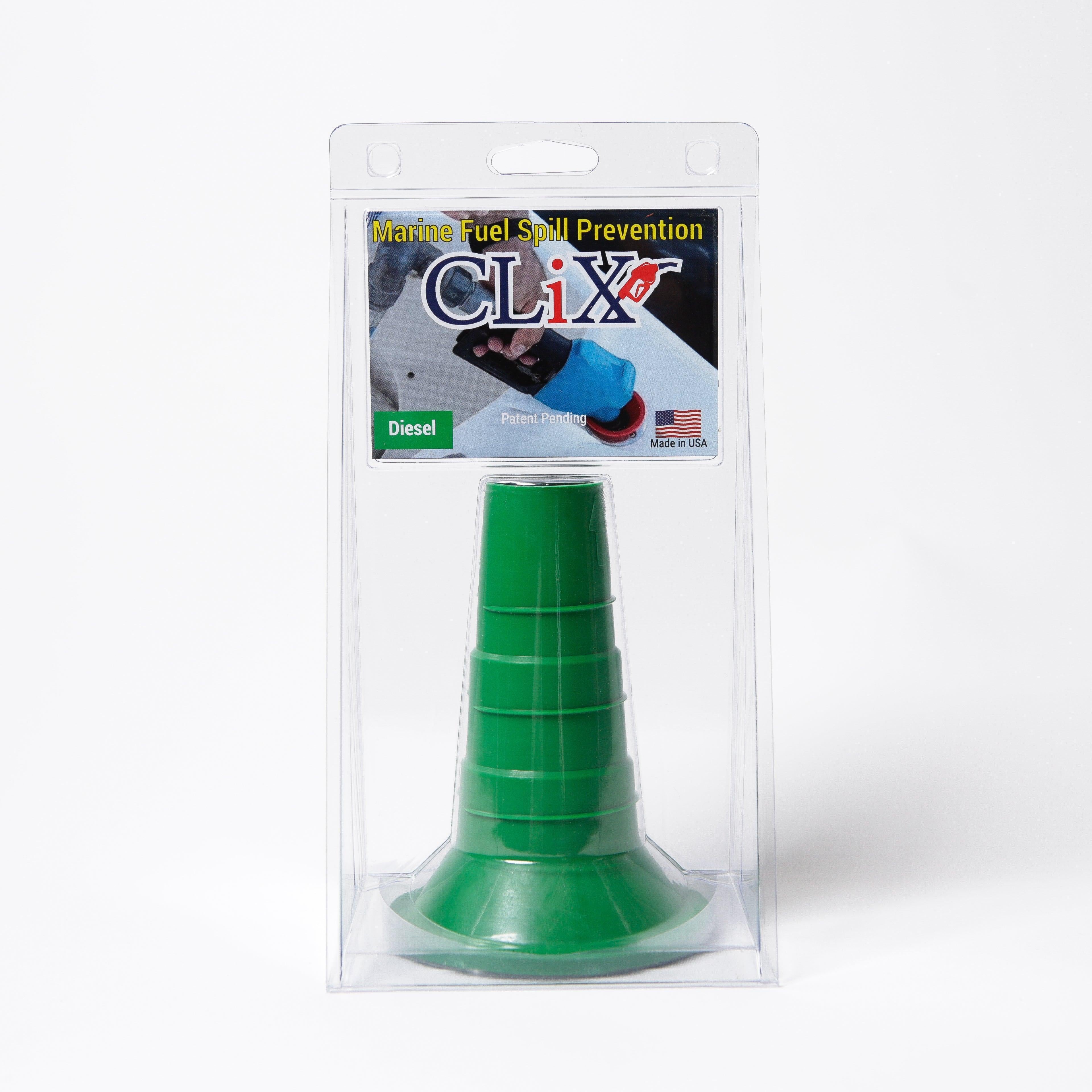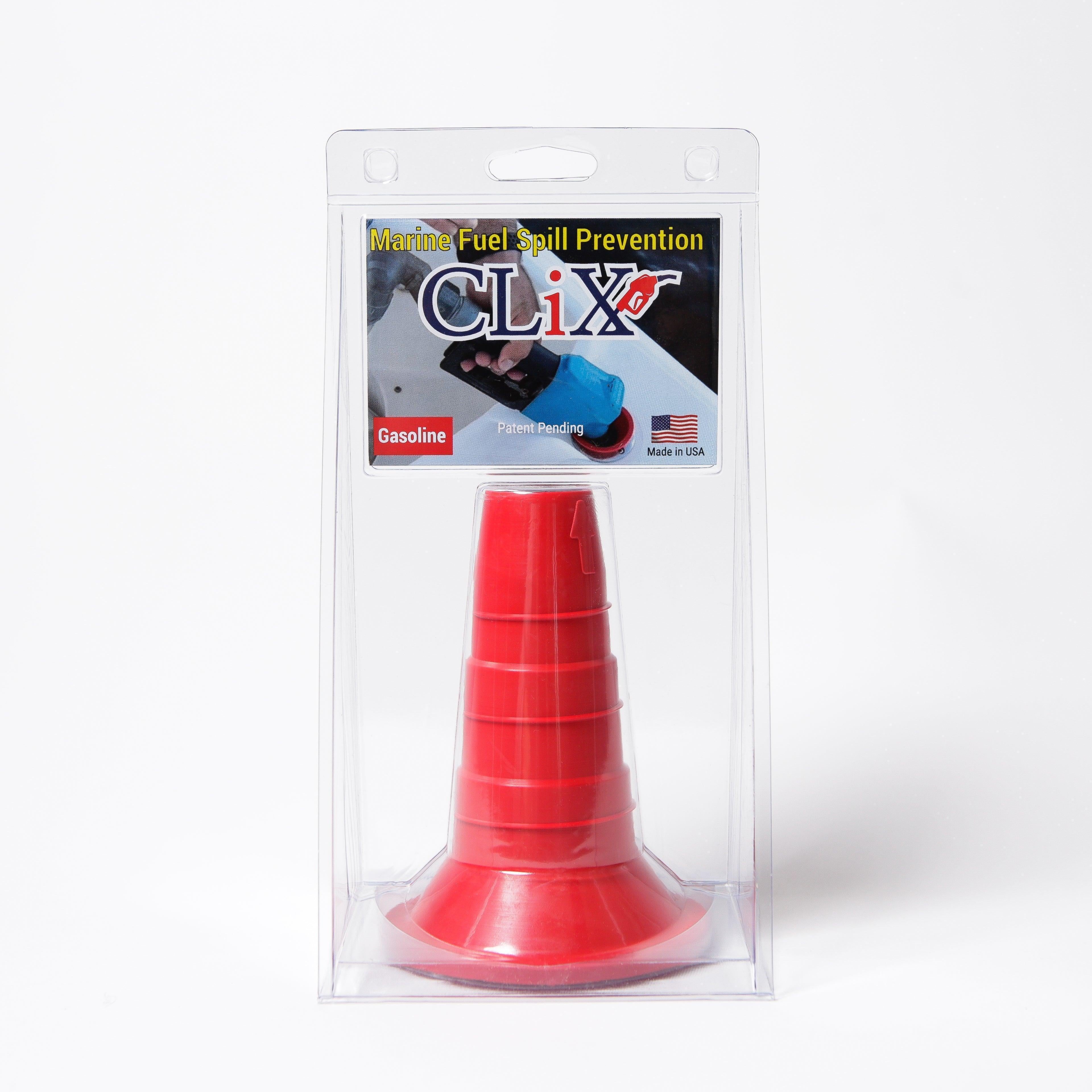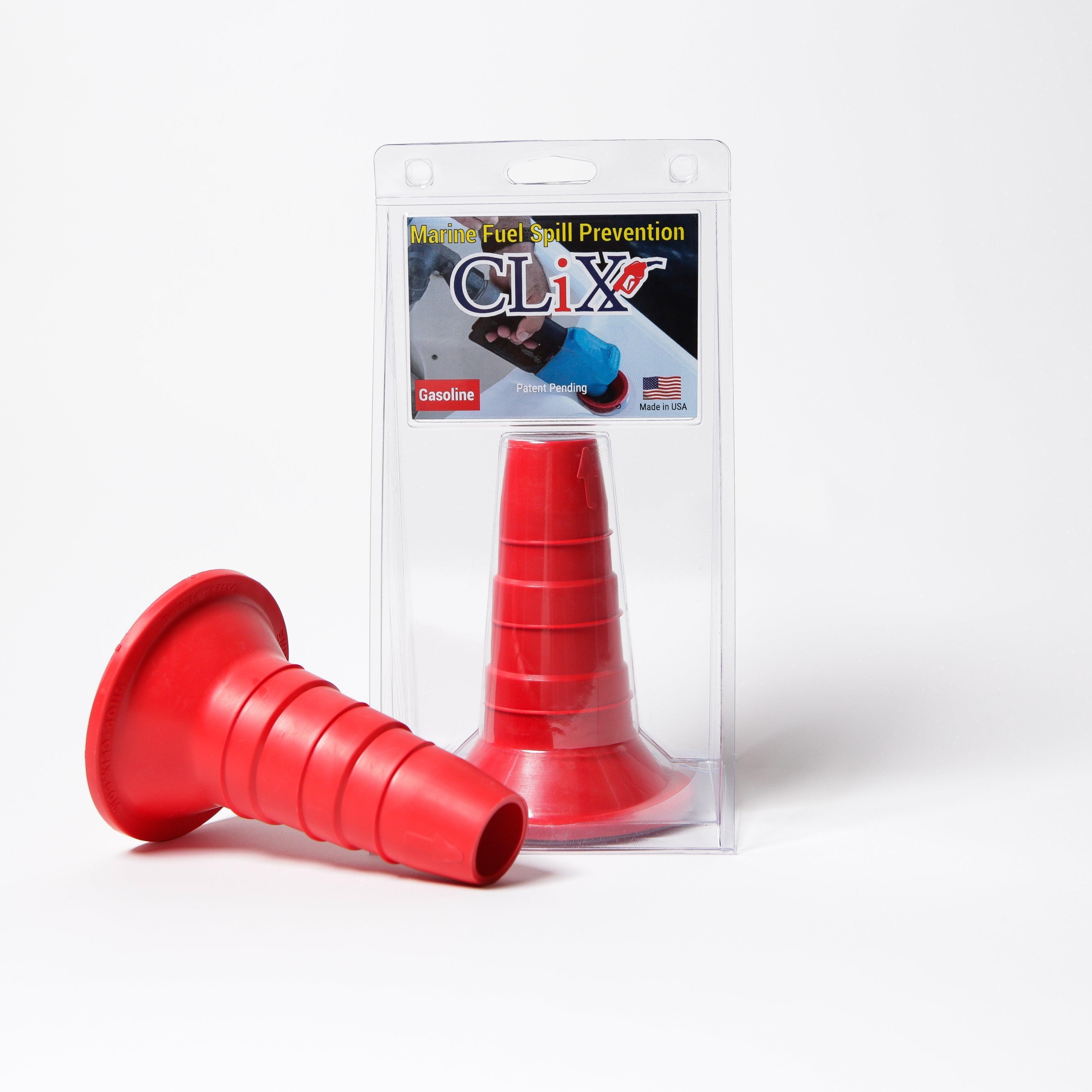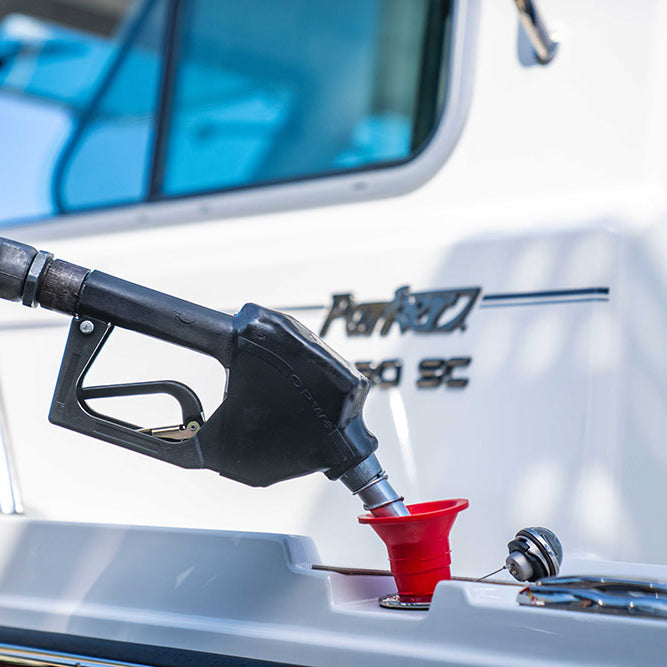In a world of automated everything, you might wonder why anyone still bothers with a manual diesel pump. It seems almost old-fashioned, right? But for anyone who's ever been stuck with a dead battery or in a remote spot far from a power outlet, the value of this simple tool becomes crystal clear.
Hand pumps for diesel fuel are exactly what they sound like: simple, power-free devices you use to move fuel from one container to another by hand. They’re a staple in marine, farming, and industrial settings for a reason. They provide a reliable backup when electricity isn't available and are the perfect solution for smaller fueling jobs.
Why Manual Diesel Pumps Are Still Essential Tools
Even with all the high-tech gadgets we have today, the humble hand pump remains a surprisingly vital piece of gear. Its real magic lies in one simple thing: independence.
An electric pump is great until the power goes out or the battery dies. A manual pump, on the other hand, works anywhere, anytime. Think of it as your ultimate Plan B—a mechanical lifeline for refueling when you're off the grid, caught in a power outage, or dealing with an emergency at sea.
It’s not just for emergencies, though. If you're a boat owner just topping off a day tank or a marina operator needing to transfer fuel from a drum, setting up a complex electric pump is often overkill. A hand pump gets the job done without any fuss over cords, batteries, or motors.
The Enduring Value of Simplicity
The real genius of a manual pump is its simplicity. This straightforward design brings some serious real-world advantages, especially when you're out on the water or in a rough-and-tumble work environment.
- Unmatched Reliability: Fewer moving parts means fewer things can go wrong. There are no circuits to fry or motors to burn out, so they just work when you need them to. Simple as that.
- Ease of Maintenance: Fixing a hand pump is usually a quick job, often just swapping out a seal or a gasket. You don't need to be a master mechanic to keep it running.
- Portability and Convenience: Most hand pumps for diesel are lightweight and don't take up much space. You can easily tuck one away in a boat locker, truck bed, or workshop until you need it.
The real value of a hand pump isn't just in moving fuel; it's in the certainty it provides. Knowing you have a functional, power-independent way to refuel your vessel or equipment offers peace of mind that technology alone cannot always guarantee.
This mix of reliability and practicality is why manual pumps are still so popular. The global market for diesel fuel transfer pumps was valued at USD 1.2 billion in 2023 and is expected to keep growing. In places with spotty power, like parts of Africa and Southeast Asia, hand pumps still make up nearly 40% of all diesel pump sales, which really shows how essential they are. If you’re curious, you can explore more about these market trends and their drivers to see the bigger picture.
Understanding How Different Manual Diesel Pumps Work
Before you can pick the right hand pump, it helps to know what’s actually happening inside when you're cranking a handle or pulling a lever. They all move diesel from point A to point B, but how they do it varies quite a bit. Think of it like a toolbox—a hammer and a screwdriver both fasten things, but you'd never use them for the same job.
The three big players in the manual pump world are piston, rotary vane, and diaphragm pumps. Each one has a different way of getting the job done, which affects its performance, flow rate, and where it works best. Getting a handle on these differences is the first step to making a smart choice for your boat or marina.
The diagram below nails down the core reasons why these simple tools are so indispensable.

At their heart, hand pumps are valued for being power-free, incredibly reliable in a pinch, and dead simple to use. Now, let's get into the specifics of what makes each type tick.
The Piston Pump: The Old-School Workhorse
The piston pump is probably the one you can picture most easily—it works just like a classic bicycle pump. The action is a simple up-and-down or back-and-forth motion.
When you pull the handle, a piston moves inside a cylinder, creating a vacuum that sucks diesel into the chamber through a one-way valve. Push the handle down, and that inlet valve closes, forcing the fuel out through a different exit valve. Simple as that. The trade-off is that this creates a pulsed, start-and-stop flow.
- Pros: They are straightforward, tough as nails, and usually the most budget-friendly. Their strong suction makes them great for lifting fuel from deep tanks.
- Cons: The flow isn't continuous, which can make transferring a lot of fuel feel a bit slow and choppy.
The Rotary Vane Pump: Smooth and Steady Wins the Race
Where the piston pump pulses, the rotary vane pump delivers a smooth, uninterrupted stream of diesel. Picture a revolving door. When you turn the crank, a set of spring-loaded blades (vanes) spins inside an off-center chamber.
This clever design creates expanding pockets on one side that pull fuel in, and shrinking pockets on the other that push it out. Every single turn of the handle moves a consistent amount of fuel, making it fast and efficient for bigger jobs. You'll find this mechanism in many high-volume hand pumps for diesel fuel.
The real magic of the rotary design is its self-priming ability and consistent, predictable flow. That's why it's a favorite in busy marinas where quick, efficient refueling is a must.
The Diaphragm Pump: Gentle and Tough
A diaphragm pump works by flexing a tough, rubber-like membrane back and forth. Pull the handle, and the diaphragm bows out, creating a vacuum that draws fuel in. Push it, and the diaphragm flexes inward, pushing the fuel out.
Because the mechanism is completely sealed, there are no sliding parts to wear down or leak. This makes diaphragm pumps incredibly durable and forgiving, especially if you're dealing with fuel that might have a bit of debris in it.
Comparing Common Manual Diesel Pump Types
To make it even clearer, here’s a quick side-by-side look at how these three pump types stack up.
| Pump Type | Mechanism | Pros | Cons | Ideal Application |
|---|---|---|---|---|
| Piston Pump | A piston moves up and down in a cylinder, drawing and pushing fuel. | Simple, affordable, excellent suction (lift). | Pulsating, non-continuous flow. | Emergency transfers, lifting fuel from deep tanks. |
| Rotary Vane Pump | Rotating vanes in an offset chamber create a smooth, continuous flow. | High flow rate, self-priming, efficient. | More complex internal parts, can be less tolerant of debris. | High-volume refueling at docks, quick transfers. |
| Diaphragm Pump | A flexible diaphragm moves back and forth to pull and push fuel. | Extremely durable, sealed design, handles debris well. | Typically lower flow rates than rotary pumps. | General-purpose use, pumping from barrels, dirty environments. |
Ultimately, seeing their strengths and weaknesses laid out like this can help you zero in on the perfect pump for your specific needs.
Why Material Matters: Built for the Marine World
The stuff a pump is made of is just as crucial as its internal parts, especially when you're dealing with the corrosive marine environment.
- Cast Iron: This is your heavyweight champion. It's incredibly rugged and built for heavy-duty, daily abuse. The downside? It's heavy and will rust if you don't keep it maintained.
- Aluminum: A great middle-ground. It's lightweight and naturally resists corrosion, making it perfect for a portable pump you can easily store on a boat.
- Stainless Steel: The top-tier choice. It offers the absolute best defense against saltwater and chemical corrosion, ensuring a long life and pure fuel. As you'd expect, it usually comes with a higher price tag.
How to Choose the Right Hand Pump for Your Needs
Picking the right hand pump for diesel isn't about finding the one "best" pump—it's about finding the best pump for your job. A marina operator refueling a dozen boats a day needs something entirely different from a solo boater who just wants a reliable backup. If you zero in on a few key factors, you can easily find a pump that works perfectly for your situation.
Think of it like choosing a wrench. You wouldn't grab a huge pipe wrench to tighten a tiny bolt. Your pump should be just as specific to the task, whether you're moving five gallons or fifty, in a busy marina or a quiet slip.
Assess Your Fuel Transfer Needs
First things first: how much fuel are you moving, and how quickly do you need to move it? The answer to that is all about the pump's flow rate, which you’ll see measured in gallons per minute (GPM) or how much fuel you get per crank.
A busy commercial marina will likely need a high-volume rotary vane pump that can push 10 GPM or more. This makes quick work of refueling larger vessels. On the other hand, if you're a boat owner just topping off your tank from a jerry can, a small piston or diaphragm pump is all you need. It’ll do the job just fine and be a whole lot easier to stow away.
The real goal here is to match the pump's output to your own pace. If you buy a pump with too high a flow rate, you've paid for power you'll never use. But if you cheap out and get one that's too slow, a simple top-off can become a real chore.
Material Compatibility Is Non-Negotiable
Diesel fuel is one thing, but the harsh marine environment is a whole different beast. The materials your pump is made from will make or break its lifespan out on the water. Saltwater and humid air are incredibly corrosive, so you need something that can stand up to them.
Here are the most common materials you'll run into:
- Cast Iron: This is the workhorse. It's tough and perfect for heavy-duty pumps that stay in one place, but you'll need to keep an eye on it to prevent rust.
- Aluminum: A great all-around option. It's lightweight but still resistant to corrosion, making it a solid choice for portable pumps.
- Stainless Steel or Coated Synthetics: This is the top-tier choice for maximum protection. If your pump will be constantly exposed to the elements, this is the way to go.
Don't Overlook Hoses and Accessories
A great pump is only half the story. The hose you use is just as critical for a safe and clean fuel transfer. Make sure it's specifically rated for diesel, otherwise the fuel can break it down over time. Also, think practically about the length—too short, and you won’t be able to reach your tank; too long, and you’ll be wrestling with a tangled mess.
Beyond the hose, look for little features that make a big difference. A built-in filter is a lifesaver for keeping gunk out of your engine. An anti-siphon valve is another must-have, as it prevents fuel from being stolen or draining out accidentally. You can dig deeper into what to look for by checking out our guide to the top manual fuel transfer pumps.
While we're focused on boats, it’s worth noting that hand pumps are a big deal across many industries. The global market for fuel transfer pumps was valued at a whopping USD 1.91 billion in 2023 and is only expected to get bigger. In fact, over 60% of fleet operators in North America and Europe rely on hand pumps for emergencies or topping off vehicles. It just goes to show how essential these simple tools really are.
Your Step-by-Step Guide to Installation and Maintenance
A hand pump for diesel fuel might seem incredibly simple, but getting the setup right and performing a little routine upkeep will make all the difference. It’s what ensures you get reliable, leak-free performance for years to come. Proper installation is your best defense against messy spills, while a bit of maintenance keeps the pump ready to go the moment you need it.

Let's walk through exactly what you need to do to get your pump working perfectly and keep it that way.
Installing Your Manual Diesel Pump
Nailing the installation from the very beginning is the key to avoiding most common headaches. A secure, leak-proof setup only takes a few minutes but pays off every single time you transfer fuel.
Follow these simple steps for a solid start:
- Get a Secure Mount: Most drum pumps include a threaded bung adapter. Your first step is to screw this firmly into the opening of your fuel drum or tank. This creates a stable base, so the pump shouldn't wobble or feel loose at all.
- Seal Every Connection: This is where leaks happen. Use Teflon tape or a pipe sealant specifically rated for diesel on all threaded fittings—the pump inlet, the outlet, and any hose connections. This tiny step is absolutely critical for a leak-proof seal.
- Attach Your Hoses and Nozzle: Now, connect your suction and discharge hoses. Make sure every clamp is good and tight. A loose clamp on the suction line can let air in, which makes it a pain to get the pump primed. A securely attached nozzle prevents drips when you’re done.
Here's a pro tip: Don't overtighten the fittings. It's a common mistake that can crack the pump housing or strip the threads. Aim for a snug, sealed connection, not a crushed one. Hand-tighten first, then give it just another quarter- to half-turn with a wrench.
A Simple Maintenance Routine That Works
Just like any tool with moving parts, your hand pump will thank you for a little TLC. A simple maintenance schedule doesn't take much time but rewards you with consistent performance and a much longer service life. For a closer look at different models, you can find more in our detailed overview of the fuel tank hand pump.
This routine really just boils down to three key areas.
Regular Inspections and Cleaning
Take a few minutes every month or so, especially after heavy use, to give your pump a quick once-over.
- Check the Seals and Gaskets: Look closely at all the O-rings and gaskets for any signs of cracking, brittleness, or wear. These are usually the first things to fail, and catching them early is an easy fix that prevents a big mess later.
- Clean the Strainer: Most pumps have a small screen or filter at the bottom of the suction tube to keep gunk out. Pop it off and clean it regularly. This guarantees a strong, steady flow and protects the pump's internal parts from getting damaged.
- Wipe It Down: Keep the pump body clean of fuel and dirt. It's not just about looks—it makes the pump easier to handle and helps you spot tiny leaks or cracks before they become a problem.
Lubrication and Smart Storage
Keeping the moving parts happy is what ensures smooth pumping action. A little lubrication goes a long way here. After you clean it, just apply a small amount of light oil to any pivot points on the handle to stop rust and keep things moving freely.
When you're not using it, find a clean, dry spot for storage. If you know it’s going to sit for a while, it's a good idea to flush it with a bit of clean diesel. This keeps the internal seals from drying out and cracking. Storing it upright is also a smart move to prevent any leftover fuel from slowly leaking out.
Mastering Fuel Handling Safety and Best Practices
Handling diesel fuel requires more than just the right equipment—it demands a healthy respect for the material and a firm grasp of safety protocols. A small slip-up can quickly escalate into a big problem, from personal injury to serious environmental damage. Following the right procedures isn’t about being paranoid; it's about being professional, responsible, and ready for anything.

The bedrock of safe fuel handling starts with you. Before you even think about touching a pump or a fuel can, make sure you're wearing the right Personal Protective Equipment (PPE).
- Nitrile Gloves: These are your first line of defense, protecting your skin from direct contact with diesel, which can easily cause irritation and dermatitis.
- Safety Glasses: A stray splash of fuel in the eyes is a genuine medical emergency. Goggles are absolutely essential to shield you from accidental sprays.
Creating a Safe Work Environment
Your immediate surroundings are just as important as your personal gear in preventing accidents. Good ventilation is non-negotiable. Diesel fumes can be dangerous if inhaled in an enclosed area, so always try to transfer fuel outdoors or in a space with plenty of airflow to let the vapors disperse.
Another crucial step that's often missed is grounding your equipment. You might be surprised to learn that fuel flowing through a hose can generate static electricity. All it takes is one tiny spark to ignite diesel fumes. Grounding straps, which connect your pump and containers to a common ground, are a brilliantly simple way to stop a static discharge before it happens. For a deeper dive on this, check out our expert tips for safe fuel transfer hand pump use.
While today's fueling technology has come a long way, the basic principles of safety haven't changed. In fact, hand pumps for diesel fuel have quite a history, evolving from simple tools for pulling water in the mid-20th century to becoming indispensable in sectors like farming and logistics. In rural parts of India, for example, manual pumps are still used for over 75% of diesel fueling needs, a testament to their reliability where modern infrastructure is scarce. You can find more on the historical and global use of manual pumps in this detailed report.
Spill Prevention and Emergency Response
No matter how careful you are, drips and minor spills are bound to happen at some point. The trick is being prepared for them. The best approach is always prevention—placing a drip pan or some absorbent pads under your nozzle and connections before you even start pumping.
A well-stocked spill kit isn't just a nice-to-have accessory. It's an essential piece of safety equipment for anyone handling fuel, especially around the water where even a tiny spill can have a huge environmental impact.
If a spill occurs, you have to move fast. Your spill kit needs to be within arm's reach and should have everything you need to contain a small incident.
What Your Spill Kit Must Contain:
- Absorbent Pads and Booms: These are specifically designed to soak up oil and fuel while repelling water, making them ideal for any marine setting.
- Sealable Disposal Bags: Once used, contaminated materials can't just be tossed in the trash. They need to be disposed of properly.
- Protective Gloves: Keep an extra pair in your kit just for cleanup.
By making these practices a regular part of your routine, you can handle diesel fuel with confidence and keep yourself, your vessel, and the environment safe.
Exploring Modern Alternatives to Manual Fuel Pumps
The classic hand pump for diesel fuel is a marvel of simplicity and reliability, but it's not the only game in town. When you need to move fuel faster or want a smarter, safer way to top off your tanks, it’s worth looking at what modern technology brings to the table. It’s all about weighing the trade-offs between manual dependability, powered convenience, and automated safety.
For most people, the natural step up from a hand pump is a 12V electric fuel transfer pump. These pumps swap muscle power for battery power, turning a chore into a quick, simple task. Just connect it to a power source, flip a switch, and watch the fuel flow—much faster than you could ever crank it by hand.
The Rise of Electric Convenience
Electric pumps are a lifesaver when you’re dealing with a lot of fuel. Think of a busy marina operator filling up several boats a day, or a commercial captain with massive tanks to fill. In those scenarios, the time and effort saved are huge. But that convenience is tied to a power cord.
- Power Source Required: An electric pump is only as good as its battery. If your power source is dead, your pump is just a paperweight. This is a big contrast to a hand pump, which will work anywhere, anytime.
- More Complexity: More moving parts—motors, wires, switches—mean more potential points of failure. A purely mechanical hand pump has very little that can go wrong.
It really boils down to this: what's more important for your situation, absolute reliability or speed? For routine, high-volume fueling, electric pumps are hard to beat. But for an emergency backup you can count on no matter what, a manual pump is still king.
The Next Step Forward: Automated Spill Prevention
Beyond just moving fuel faster, the newest innovations are all about making the process cleaner and safer. This is where you find advanced systems designed specifically to stop overfills and spills before they happen. A diesel spill isn't just a mess; it's an environmental hazard that can ruin your boat's gelcoat and lead to hefty fines.
This new wave of technology takes the human guesswork out of fueling. Instead of straining to hear the gurgle of a nearly full tank, these systems shut off the flow automatically. It’s a major leap from simply transferring fuel to managing it with precision.
Take a look at systems like CLiX Fueling Solutions. They are built from the ground up to prevent spills by automatically stopping the fuel flow the moment a tank is full.
The system works by creating a connection between the fuel nozzle and the tank's vent line. As the tank fills, the air pressure signals the nozzle to shut off at the perfect moment—no overflows, no drips, no mess. It’s a modern solution that protects the environment, your boat, and your peace of mind, moving way beyond the simple mechanics of a hand pump for diesel fuel to deliver a smarter, safer result.
Got Questions? We’ve Got Answers.
Even after walking through the basics, you probably still have a few questions about diesel hand pumps. That’s perfectly normal. This section tackles the most common things people ask, giving you quick, practical answers to get you back on track.
Can I Use the Same Hand Pump for Diesel and Gasoline?
That's a hard no. It might seem convenient, but it's a dangerous idea. Diesel and gasoline are chemically very different, and the seals and gaskets inside a pump are specifically chosen to handle one or the other.
If you pump gasoline through a diesel-rated pump, the seals will likely swell, crack, or even start to dissolve. This leads to leaks, which around fuel is a recipe for disaster. Always, always check that your pump is rated for the specific fuel you're handling. It’s just not worth the risk.
How Do I Get My Manual Pump Started?
Getting the fuel flowing is called "priming," and it's all about getting the air out of the system so the pump can create a vacuum. The process is pretty simple and depends on the pump type.
- Rotary Pumps: Good news here—most of these are self-priming. Just give the crank a few good turns, and it should start pulling fuel up on its own.
- Piston and Diaphragm Pumps: These often need a little help. You'll probably need to work the handle for 10-15 strokes to push all the air out of the lines and get the diesel moving. A tight seal on all your connections is key; any air getting in will make it impossible to prime.
My Hand Pump Isn't Working. What's Wrong?
Don't panic! If your pump suddenly stops pumping, it's usually one of three simple things. Before you think about replacing it, run through this checklist:
- Look for Air Leaks: This is the number one culprit. A loose connection on the hose going into your fuel tank or drum will kill the suction. Make sure every clamp and fitting is snug.
- Check Your Suction Tube: Is the end of the tube actually in the diesel? If it's sitting just above the fuel level, you're just pumping air.
- Clean the Strainer: Most suction tubes have a small filter or strainer on the end to keep gunk out of the pump. If that gets clogged with debris, no fuel can get through. Pull it out and give it a good cleaning.
Think of it like trying to drink from a straw with a hole in it—it just doesn't work. Nine times out of ten, a pump that won't draw fuel is losing suction somewhere. Tightening every connection is almost always the fix.
How Often Should I Replace Seals and Gaskets?
There's no magic number here. How long your seals last depends on how often you use the pump, the quality of your diesel, and even the weather.
The best bet is to just keep an eye on them. Give them a quick inspection every few months. If you see any signs of cracking, stiffness, or brittleness—or if you spot a tiny leak—it's time to swap them out for new ones.
Ready to eliminate fuel spills for good? The innovative design of CLiX Fueling Solutions automatically stops the flow when your tank is full, protecting your boat and the environment. Discover a stress-free fueling experience at https://clixfueling.com.

